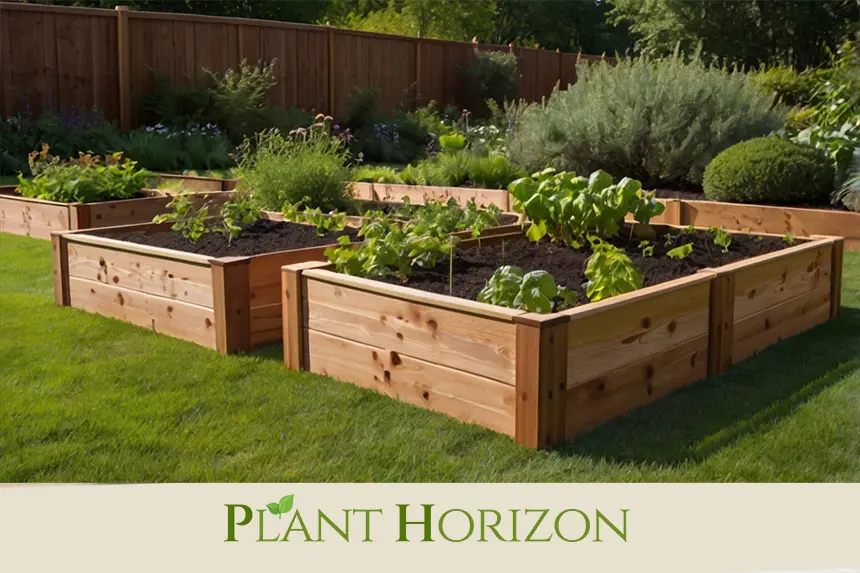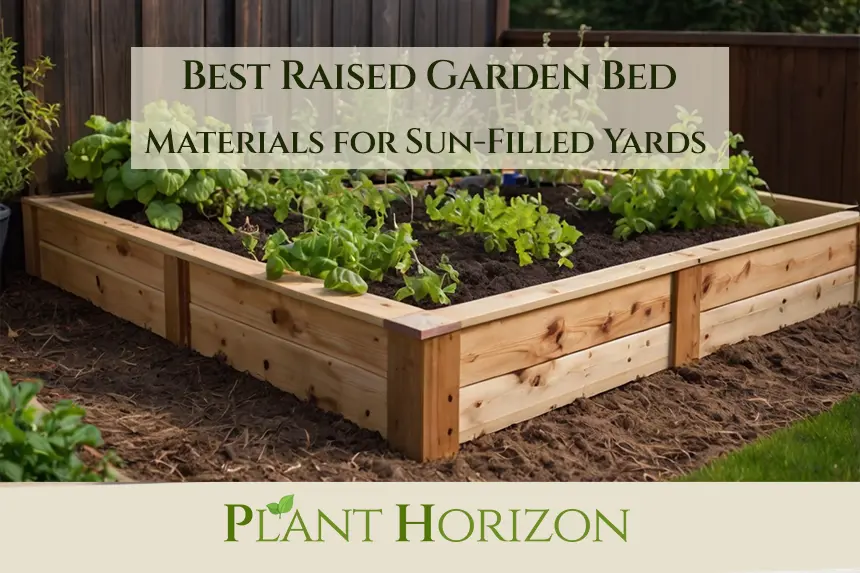When it comes to creating the perfect outdoor oasis, choosing the best raised garden bed materials for your sun-filled yard is imperative. Not only does the material impact the bed’s durability, but it also determines the overall success of your plants. From treated wood to galvanized steel, the variety of options can be overwhelming. In this guide, we’ll dive deep into the pros and cons of various raised garden bed materials, helping you select the perfect one to make your gardening dreams come true.
Why Choose Raised Garden Beds?
Before deciding on the materials, let’s first explore why raised garden beds are a fantastic choice for gardening enthusiasts. They offer numerous benefits:
- Improved Soil Quality: You have complete control over the soil mix, ensuring optimal conditions for your plants.
- Better Drainage: Raised beds prevent waterlogging, which is crucial for many plant varieties.
- Pest Control: Raised garden beds can help keep pests like slugs and snails at bay.
- Ease of Maintenance: No more bending down! Raised beds make planting, weeding, and harvesting far more comfortable.
Now that we’ve established their advantages, let’s delve into the best materials you can use for constructing your raised garden beds.
Top Raised Garden Bed Materials to Consider
When looking for the best raised garden bed materials, you have a range of options that cater to various budgets, aesthetics, and functional needs. Let’s explore each one in detail.
1. Cedar Wood
Cedar is a highly popular choice for raised garden beds due to its natural resistance to rot and pests. This material not only looks beautiful but also lasts for several years with proper care.
Pros:
- Natural resistance to decay
- Eco-friendly and chemical-free
- Aromatic, adding a pleasant fragrance to your yard
Cons:
- More expensive than other wood options
- Requires occasional maintenance to extend lifespan
Recommendation: Opt for untreated cedar to ensure it’s free of harmful chemicals. This is especially important if you’re growing vegetables or herbs for consumption.
2. Pressure-Treated Wood
Once shunned by gardeners due to the use of harmful chemicals, modern pressure-treated wood is now considered safe for raised garden beds. The treatment helps prevent rot and pests, making it a long-lasting and affordable option.
Pros:
- Affordable and widely available
- Durable and resistant to rot and pests
Cons:
- Not as eco-friendly as natural wood
- May still leach small amounts of chemicals, so avoid using it for edible plants
Tip: If you’re cautious about the safety of treated wood, consider lining the interior with a barrier like landscape fabric.
3. Galvanized Steel
For a modern and industrial look, galvanized steel is an excellent choice for raised garden beds. This material is virtually maintenance-free and extremely durable, standing up to the elements for decades.
Pros:
- Long lifespan—can last up to 20 years or more
- Resistant to rust and corrosion
- Sleek, modern appearance
Cons:
- May heat up quickly in direct sunlight, potentially affecting plant roots
- More expensive upfront compared to wood
Consider adding a layer of insulation inside the bed during extremely hot weather to protect root systems from overheating.
Factors to Consider When Choosing Raised Garden Bed Materials

Selecting the best raised garden bed material involves assessing your yard’s specific needs, as well as factoring in maintenance and your budget. Here are key considerations to keep in mind:
1. Longevity
The lifespan of your raised garden beds largely depends on the material you choose. While wooden beds often need replacing after several years, options like galvanized steel or stone can last much longer.
2. Soil Safety
If you plan to grow edible plants, it’s crucial to select materials that won’t leach harmful substances into the soil. Opt for untreated wood or metal options that are certified food-safe.
3. Aesthetics
Raised garden beds should complement your outdoor space. Whether you prefer a rustic wooden look or a sleek metal finish, choose a material that aligns with your yard’s aesthetic.
How to Maintain Your Raised Garden Beds
Once you’ve chosen your materials and built your garden beds, proper maintenance will ensure their longevity and functionality. Here are some tips to keep your raised garden beds in top shape:
- Inspect Regularly: Check for signs of wear, such as rotting wood or rusted metal, and make repairs as needed.
- Keep Soil Healthy: Rotate crops and add compost annually to replenish nutrients in the soil.
- Water Mindfully: Avoid waterlogging by using proper drainage techniques and watering only as needed.
Final Thoughts on Choosing the Best Raised Garden Bed Materials
The best raised garden bed materials depend on your needs, budget, and personal style. Whether you love the natural beauty of cedar wood, the affordability of treated lumber, or the sleek durability of galvanized steel, there’s a perfect material for your sun-filled yard. Raised garden beds not only elevate the look of your outdoor space but also simplify gardening, making it a pleasure rather than a chore.
Ready to embark on your gardening journey? Check out Plant Horizon for expert tips and resources to help your garden thrive!











